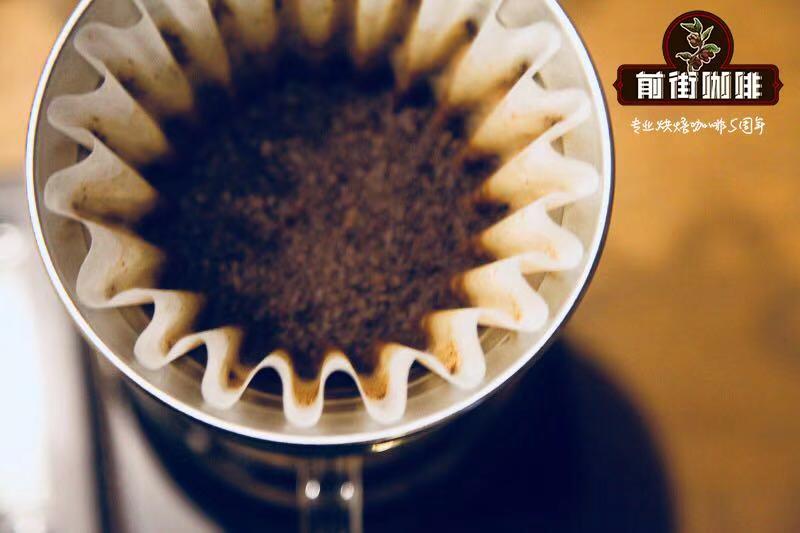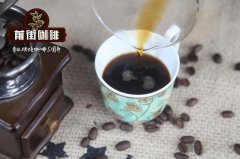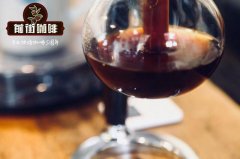Brief introduction of the factors affecting Coffee extraction and the influence of Water temperature on Coffee extraction

Professional coffee knowledge exchange more coffee bean information please follow the coffee workshop (Wechat official account cafe_style)
Qianjie Coffee-factors affecting the extraction of shared Coffee
1. The ratio of coffee to water:
To put it simply, in the same 150ml cup, the higher the coffee content, the stronger the taste, while the more the water content, the lighter the taste. Like ordinary drip coffee, we want a sweet and refreshing taste, so we use a lower coffee-to-water ratio, while espresso aims to extract coffee as syrup-like coffee in a short time, so use a higher coffee-to-water ratio. In the case of a cup of coffee, we expect that the weight of coffee released into the water is about 22% of that of coffee. It can also be said that the exchange rate of coffee and water, we expect to fall in the range of 18 murmurs 22%. To grasp this standard, it is usually recommended that the ratio of coffee to water is 1:15. Of course, this number is quite flexible. We often adjust the ratio of coffee to water according to individual taste, water temperature, degree of grinding and degree of roasting. After many fine-tuning, we find out the most appropriate ratio of coffee to water that suits our own taste.
two。 Grinding thickness and extraction time:
Coarser grinding requires a longer soaking time to release the taste of coffee into the water, extracted by soaking, such as pressure kettle, siphon pot is ideal for coarse ground coffee, because the contact surface between coffee and water is small, so let the water pass too quickly, it is difficult for coffee to have proper contact time with water to dissolve the taste into the water. On the other hand, the use of finely ground coffee will save time for coffee to come into contact with water. If you use the way of soaking, there will be excessive extraction. So we usually use a method that allows water to come into contact with coffee quickly and flow out quickly. Such as hand flushing or concentrated extraction.
As for the grinding degree, how much should be adjusted? Because everyone uses different equipment, it is not fair to say which bean grinder or coffee machine is more standard. It is suggested that the thickness should be adjusted according to the extraction method and personal taste.
3. Proper extraction operation
1. Estimate the degree of grinding of coffee and the time of coffee in contact with water. As mentioned in the previous paragraph, the cooking methods suitable for rough grinding and fine grinding are different, and a little carelessness may lead to insufficient or over-extraction.
2. The temperature of water. The higher temperature will shorten the extraction time, while the lower temperature we need to extend the extraction time to obtain the ideal extraction degree. In terms of water temperature, we usually recommend falling between 85 degrees Celsius and 94 degrees Celsius, in other words, boiling water is not an ideal choice for coffee extraction, because too high temperature will seriously shorten the extraction time, so excessive extraction often occurs, resulting in reduced aroma, poor flavor, and bulky taste.
3. Pre-immersion. In order to soak the coffee evenly, we often wet the coffee first, let the water flow through the coffee once, tidy up the contact surface between the coffee and water, and then formally extract it. We often use this technique when using hand pots, and some people call it "steaming". Similarly, when using a siphon pot, we also use this technique to smooth the contact surface between water and coffee in order to achieve the purpose of balanced extraction.
4. Ideal extraction method
i. Immersion type: nothing is more representative than the pressure kettle. Let the coffee soak in hot water for a period of time and then filter out.
ii. Cooking method: people who often watch European costume movies will have seen the protagonist put coffee and water in a pot and cook it directly on the stove. Use slow heating and hot convection in water to extract coffee.
iii. Osmosis: the principle of mocha pot belongs to osmosis. Heat the hot water vapor into the metal tube, flow the coffee evenly through the filter, and finally the extracted coffee liquid flows out from the outlet of the upper pot.
iv. Drip filter: both hand-made and American coffee machines belong to this method, which drips hot water into the coffee and uses the physical nature of the water to extract the coffee from the top down.
v. Vacuum filtration: the siphon kettle is the most representative tool for this kind of extraction. Using the principle of thermal expansion and cold shrinkage and the phenomenon of vaporization, the hot water is pumped from the lower pot into the upper pot, and then the lower pot is cooled after the extraction is completed, and then the water is sucked back to the lower pot by vacuum extraction.
5. Good water quality
The weight of water in a cup of coffee accounts for 98%! So we can say that the quality of water affects 98% of coffee. In addition to pure water, there are many kinds of minerals and, of course, some microbes in the water we use. Because coffee is very sensitive, too much or too little minerals will affect the taste of coffee. If the mineral content is too high, it can even damage our equipment (especially the espresso machine, where calcium is the killer of the machine). Therefore, it is very important for us to soften and filter the water quality.
END
Important Notice :
前街咖啡 FrontStreet Coffee has moved to new addredd:
FrontStreet Coffee Address: 315,Donghua East Road,GuangZhou
Tel:020 38364473
- Prev

What is the effect of water quality on coffee extraction? a brief Analysis of the effect of Hot Water quantity on Coffee extraction
Professional coffee knowledge exchange more coffee bean information please follow the coffee workshop (Wechat official account cafe_style) Qianjie coffee-share the effect of water temperature and water quantity on coffee extraction water quality, including total hardness, alkali hardness, pH value, water source and other major factors. Generally speaking, the water quality of coffee extraction mostly refers to the total hardness. This article will explain the relevant words with a statement as simple as possible.
- Next

What are the factors affecting coffee extraction? what is the appropriate temperature for coffee extraction?
Professional coffee knowledge exchange more coffee bean information please follow coffee workshop (Wechat official account cafe_style) Qianjie Coffee-factors affecting coffee extraction sharing when hand brewing, which factors will affect coffee extraction? 1. Baking depth 2. The thickness of coffee powder is 3. The amount of powder is 4. The brewing water temperature is 5. Filter cup type 6. Types of hand flushing pots 7. The mode of water injection is 8. The size of water injection is 9. Water injection
Related
- Beginners will see the "Coffee pull flower" guide!
- What is the difference between ice blog purified milk and ordinary milk coffee?
- Why is the Philippines the largest producer of crops in Liberia?
- For coffee extraction, should the fine powder be retained?
- How does extracted espresso fill pressed powder? How much strength does it take to press the powder?
- How to make jasmine cold extract coffee? Is the jasmine + latte good?
- Will this little toy really make the coffee taste better? How does Lily Drip affect coffee extraction?
- Will the action of slapping the filter cup also affect coffee extraction?
- What's the difference between powder-to-water ratio and powder-to-liquid ratio?
- What is the Ethiopian local species? What does it have to do with Heirloom native species?

